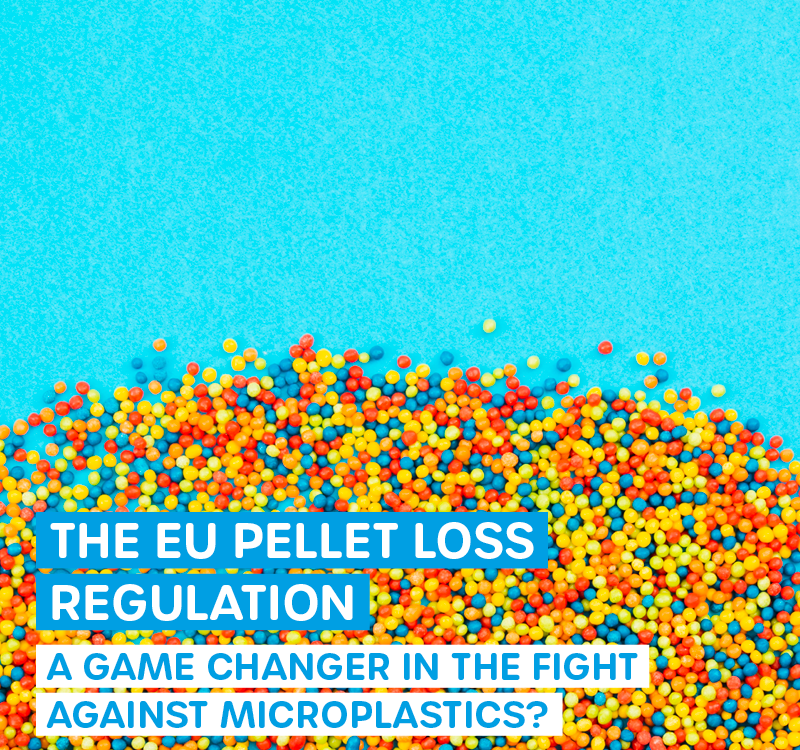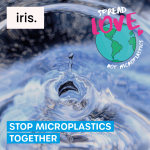
Stop Microplastics Together
6. October 2025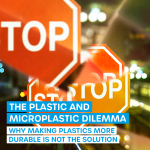
Longevity of Plastics
27. October 2025Microplastics in Our Food: The Invisible Danger on Our Plate
New studies show that microplastics are detectable in virtually all foods -- from fresh apples to processed chicken nuggets. Highly processed foods contain significantly more plastic particles than fresh products. Our kitchens are also part of the problem: plastic utensils release thousands of microplastic particles daily.
The Problem is Bigger Than We Thought
If you drank your coffee from a plastic cup this morning, ate a sandwich from plastic packaging, or stirred your dinner with a plastic spoon, then you very likely consumed microplastics. What was considered primarily an ocean problem just a few years ago has long since arrived in our food chain.
A comprehensive study by Ocean Conservancy and the University of Toronto found microplastic particles in 88% of all protein samples examined -- regardless of whether they came from the sea, land, or plant sources. This means that an average American adult consumes an estimated 11,500 to 3.8 million microplastic particles per year through food.
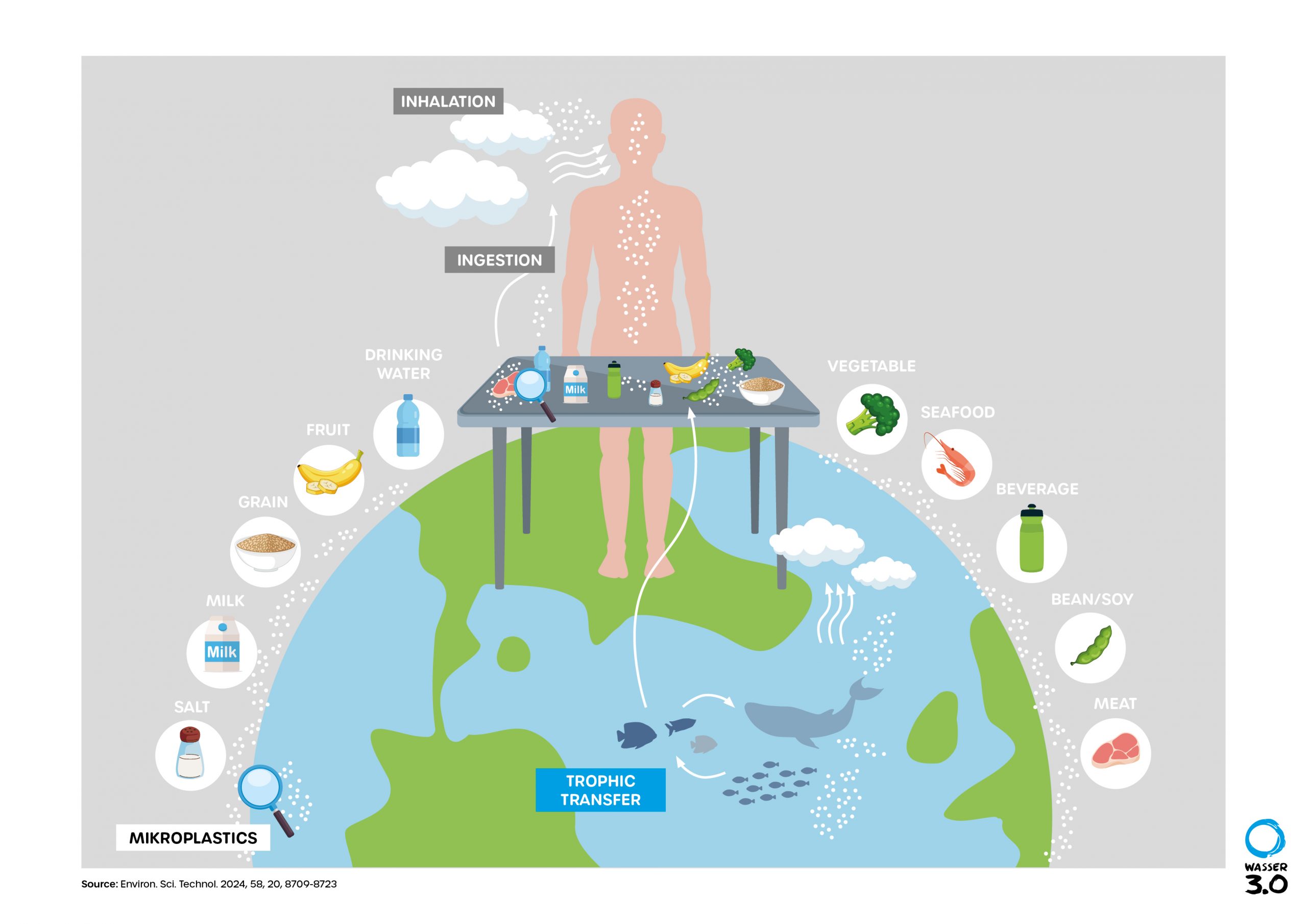
Microplastics on our plates © Wasser 3.0
Identification of Three Main Sources of Contamination
Current research identifies three main pathways through which microplastics enter our food:
- Environmental Contamination of Fresh Foods
Even supposedly "clean" fresh foods are affected. An Italian study found between 52,050 and 233,000 microplastic particles per gram in fruits and vegetables. Apples and carrots showed the highest contamination values.
Turkish researchers examined the most consumed fruits and vegetables in 2023 and found an average of 2.9 particles per gram. The problem: Plants can absorb microplastics through their root systems and transport them to stems, leaves, seeds, and fruits.
- Processing-Related Contamination
This is where it becomes particularly problematic. A systematic analysis of 103 studies confirmed in 2025 that ultra-processed foods contain significantly more microplastics than minimally processed products. The reason: "The higher number of processing steps increases contact time with plastic-containing equipment components within production processes," explains Dr. Jane Muncke from the Food Packaging Forum.
An extreme example is tea bags: Researchers at McGill University found that a single plastic tea bag releases about 11.6 billion microplastic and 3.1 billion nanoplastic particles.
- Household-Related Release
Our own kitchens are part of the problem. A 2024 study shows that plastic cookware can contribute thousands of microplastic particles per year to homemade foods. Particularly problematic are:
- Old plastic utensils: Scientific American reports that old plastic cookware releases significantly more particles than new ones
- Heat exposure: Disposable cups with 95°C hot water released 50% more microplastics than at 50°C
- Plastic kettles: New kettles can release 6-8 million microplastic particles per cup
The Difference Matters: Fresh vs. Processed
To illustrate the difference, scientists have compared various meals:
Fresh lunch menu (chicken breast fillet, salad, carrots, apple):
- Estimated intake: ~30-35 million microplastic particles
Highly processed menu (chicken nuggets, breaded fish, packaged salad):
- Estimated intake: ~50-80 million microplastic particles
Studies consistently show that chicken nuggets were more contaminated than corresponding chicken breast fillets. Breaded shrimp even showed over 300 microplastic particles per serving – the highest measured values.
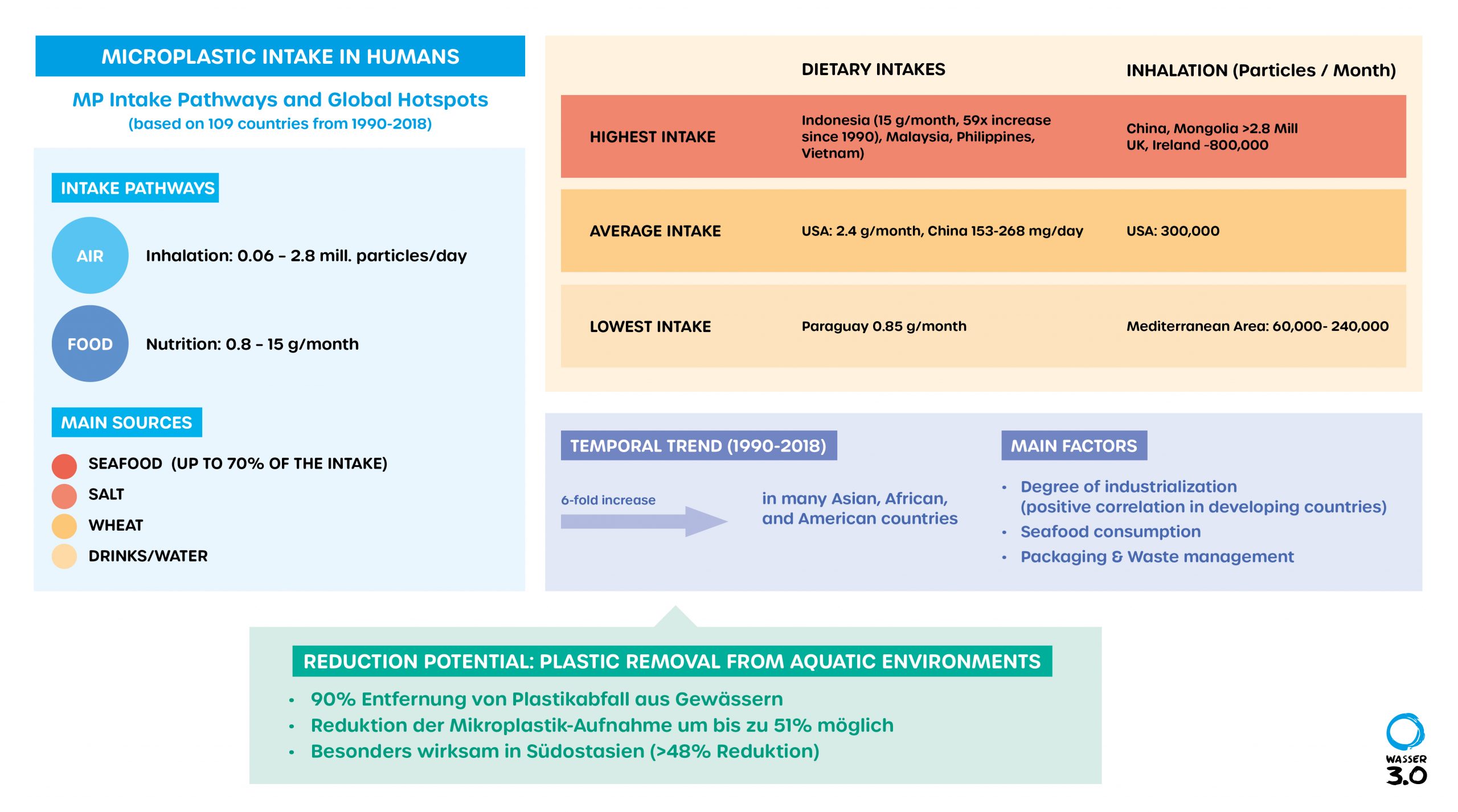
Microplastic Intake in Humans © Wasser 3.0
Health Effects: What Do We Know?
The health consequences are only gradually being understood, but they are concerning:
- A study published at the end of March 2024 describes that people with microplastics in their carotid arteries had twice the risk of heart attack, stroke, or death in the following three years.
- Studies on mice showed microplastic migration through the brain and blockage of blood vessels
- Microplastics can act as carriers for toxic chemicals like BPA, phthalates, and heavy metals
The Problem of Data Quality
A major problem with current research is the lack of standardization. Only 9% of the studies examined followed complete quality assurance and quality control criteria. FTIR (Fourier Transform Infrared Spectroscopy) is the most used detection technique, but reliable quantification of smaller particles remains limited by existing analytical techniques. With our fast and robust microplastic analytics Wasser 3.0 detect, we can close data gaps, as our fluorescence markers can distinguish microplastics from natural particles and fluorescence microscopy provides cross-validated datasets.
What Else Can You Do?
Based on current research, there are practical steps to reduce microplastic exposure:
Immediate Measures:
- Replace kitchen equipment: Exchange plastic cutting boards, utensils, and containers for alternatives made of glass, stainless steel, or wood
- Avoid heat: Never heat plastic containers, not even in the microwave
- Reduce packaging: Buy unpackaged foods or those packaged in glass/paper whenever possible
- Consider processing level: Prefer minimally processed foods
Long-term Strategies:
- Invest in high-quality, plastic-free kitchen equipment
- Use loose-leaf tea instead of tea bags
- Drink tap water from glass bottles instead of plastic bottles
The Outlook: Research and Regulation
The FDA continuously monitors research on microplastics in foods but currently sees "insufficient scientific evidence that the amounts detected in foods pose a risk to human health."
Nevertheless, further studies are urgently needed, particularly:
- Long-term health effects
- Standardization of analytical methods
- Development of realistic exposure models
- Effectiveness of prevention measures
Conclusion: Create Awareness, Don't Panic
Microplastics in food is a real and growing challenge, but not a reason to panic. Research is still in its early stages, and many questions remain unanswered. What we do know, however, is that: highly processed foods and plastic utensils are two main sources of exposure.
As Beyond Plastics aptly summarizes: "There is no way to completely avoid microplastic consumption, but we can significantly reduce our exposure." The key lies in conscious decisions: fewer processed foods, less plastic in the kitchen, more glass and stainless steel.
The good news? Every small change counts. And while science learns more about long-term effects, we can already make smarter decisions today.



